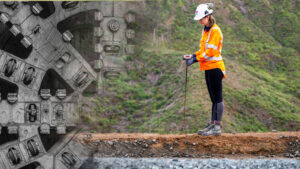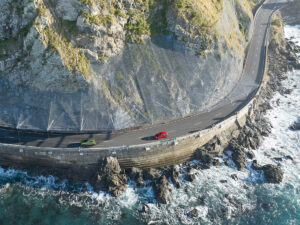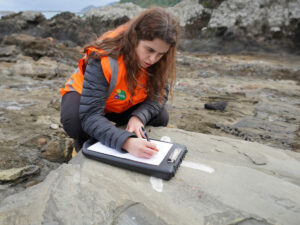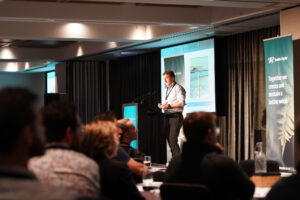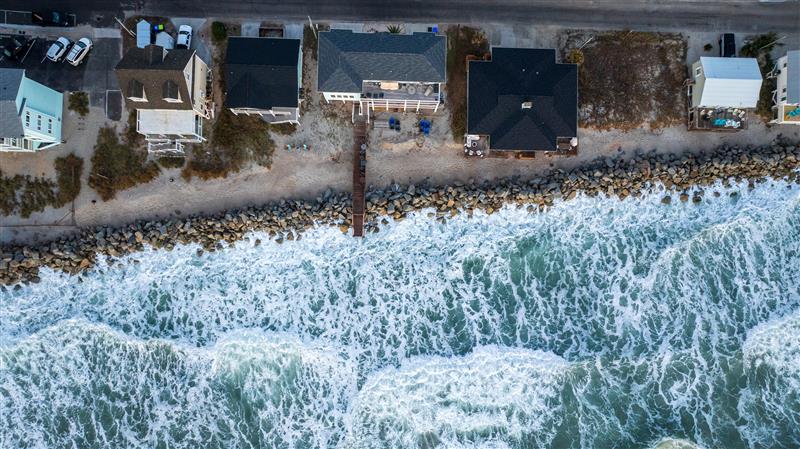The Cost of Disaster: Who Foots the Bill?
As climate risks and disasters intensify and our infrastructure ages, ensuring the disaster resilience of critical infrastructure comes at a cost, but who should bear it?
At Infrastructure New Zealand’s Infrastructure Resilience Conference, James Russell, Sector Director – Finance and Insurance, spoke alongside colleagues Chris Perks, Sector Director – Transport and Delivery Partners, and Sean O’Meara (BDO). The panel discussed how Australia has approached the funding, financing, and governance of infrastructure resilience, drawing lessons for New Zealand.

This piece distils their conversation, with James providing further thoughts based on disaster funding feedback from the session.
Comparison with Australia
Aotearoa New Zealand has many lessons to learn from Australia, with both countries facing increasing climate-related threats, similar infrastructure challenges, and economic and social considerations.
Aging infrastructure and urban growth are placing additional strain on networks, and both countries have large regional infrastructure networks with limited access to funding.
Similar challenges in balancing economic growth, infrastructure investment, and the cost of resilience and adaptation also arise.
Key points of difference
Before we explore Australia’s key lessons, it’s important to acknowledge some points of difference. Australia’s larger economy provides access to greater funding.
The New Zealand National/Local government model doesn’t work like Australia’s Federal/State system, which is driven by inequities in access to funding from taxation/rates between the National and Local Government levels in Aotearoa.
Lessons from across the ditch
Despite these differences, it is still useful to consider what lessons we can apply to the New Zealand context:
- Establish dedicated, long-term resilience funding
Australia has created structured funding mechanisms like the Disaster Ready Fund (DRF) that provide predictable, multi-year investment in resilience projects, separate from disaster recovery funding.
New Zealand could benefit from a dedicated national resilience fund that enables proactive planning and sustained investment rather than relying on reactive, post-disaster allocations.
- Strengthen multi-level government coordination
Australia’s federal system fosters strong collaboration between national, state, and local governments, with funding frameworks aligned to the National Disaster Risk Reduction Framework. An example of collaboration between national, state, and local governments in Australia is the Queensland Reconstruction Authority’s (QRA) implementation of the Disaster Recovery Funding Arrangements (DRFA), particularly following major flood events.
With a more centralised system, New Zealand could improve resilience outcomes by enhancing coordination across agencies, local authorities, and the private sector, ensuring funding and planning are aligned nationally and regionally.
- Incorporate betterment into recovery funding
Australia integrates betterment into disaster recovery through programmes like the QRA Betterment Fund, which rebuilds damaged infrastructure to higher, more resilient standards. Co-funded under the DRFA, over 520 projects have been delivered, reducing future damage and avoiding an estimated $390 million in repair costs.
New Zealand could embed betterment principles into recovery policies to promote long-term disaster resilience, reduce repetitive losses, and ensure infrastructure is fit for future hazards.
- Leverage private investment and insurance incentives
Australia actively uses private investment and insurance-based incentives to share risk and funding responsibility, encouraging innovation and private sector involvement in resilience investment. For example, Suncorp, a major insurer in Australia, has actively supported government and community investment in flood levees, cyclone shelters, and resilient homes to reduce future claims.
New Zealand could adopt similar models to attract private capital, spread costs, and build stronger financial incentives for resilient design in both public and private infrastructure. The New Zealand government has a strong appetite for private investment, as demonstrated by the International Investment Summit.
So, how can we apply these lessons? Firstly, New Zealand should consider a more structured approach to disaster preparedness, like Australia’s Disaster Ready Fund. Another key step is exploring the private sector’s role (particularly financiers and insurers) in financing infrastructure resilience in New Zealand.
As a country, Aotearoa must also ensure that resilient investments are equitable and benefit all communities, especially those outside the main centres.
Finally, legislative changes are essential to improve how New Zealand prepares for and responds to the increasing number of natural disasters.
About James Russell
James Russell is the Director for Tonkin + Taylor’s Financial and Insurance Sector. With a background in geotechnical engineering and the assessment of Geohazards, he specialises in climate and natural hazard consulting. James leads initiatives that integrate risk assessment with financial resilience strategies, supporting clients in managing the impacts of climate change and natural disasters on their asset portfolios.
Explore our range of thought leadership articles



